Untitled Document
Choosing a Surface
Using the correct soldering board makes it easier to get predictable, consistent results when you solder. All modern soldering boards are asbestos free.
Not only do soldering boards provide the proper surface for your project, they also act as a target safety zone foryour torch. Since they are fireproof, you know that you will always be lighting your torch in a safe zone if you aim it 4-6 inches above your soldering board as you ignite it.
There are so many choices to make when it comes to soldering boards. Consult the list below to learn more about the various types and what would work for you.
Ceramic Soldering Board:
Hard ceramic soldering boards are good general surfaces to use, they can be a bit of a heat sink, (pulling away heat from the area) helping to control overheating.
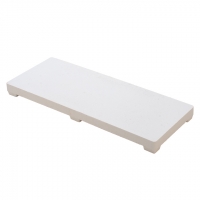
Ceramic soldering boards withstand temperature up to 2,000 degrees Fahrenheit. Measures 6" x 12" x 1/2" with feet to keep board raised slightly above bench.
Solder-ite Soldering Board:
Solder-ite boards tend to reflect and concentrate the heat in the spot being heated with the torch, an advantage when firing metal clay or fusing fine silver. They are lightweight and come in two types, soft and hard. The soft boards can be carved or used with pins to hold pieces in place during soldering. The hard boards are extremely durable and long lasting and are perfect when you want to take your tools on the road.
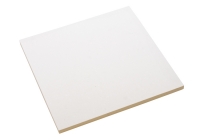
This non-asbestos soldering pad is durable, smooth and heat-reflective. This softer board allows pins to be inserted to secure your work but is hard enough not to crumble and highly flame-resistant and non-combustible. This long-lasting, all-purpose pad can be used to protect surfaces from burning. Meets OSHA standards. Maximum temperature 1,700 degrees Fahrenheit. 12" x 12" x 3/4"
Here's a great video by Kate to help give you a little more info about the Solder-ite Soldering Board.
Honeycomb Soldering Boards:
This board has regular holes in a honeycomb pattern that make for plenty of options to use pins to hold pieces in place for soldering. They are also heat reflective helping to keep temperatures high even if the piece is not in contact with the board. These ceramic boards are somewhat fragile, so avoid dropping them on hard surfaces.
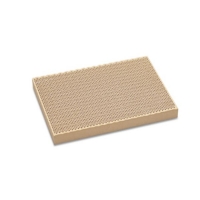
Popular honeycomb design holds pins to keep work in place while soldering. Made of a non-asbestos ceramic, the board is very lightweight and reflects heat. Available in two sizes. Up to 2,000 degrees Fahrenheit. 5-1/2" x 7-3/16".
Watch as Kate tells us about the Honeycomb Soldering Board
Charcoal Blocks:
Charcoal blocks are unique among soldering surfaces. When using a charcoal block the heating of the block causes it to smolder and use up some of the oxygen in the immediate area around the piece of jewelry helping to cut down on fire scale. It has a soft surface, and can be carved and shaped to support different soldering jobs. It is fragile, and can crack in half. Bind around the circumference of the block using steel wire to hold it together in case it does crack apart.
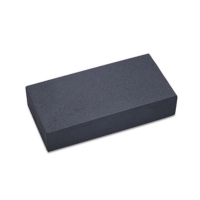
The world’s best charcoal will last three to five times as long. It also has better heat retention, giving the user the desired reflective heat to solder faster and easier with better flow. Our premium blocks are wrapped in PVC eliminating the mess often associated with charcoal. Measures 5-1/2" x 2-3/4" x 1-1/4".
Charcoal Block Details by Kate Richbourg
Kiln Bricks:
Kiln bricks, (also used to build kilns) are made of refractory cement, and they hold heat very well. Easy to cut and shape they can also be used to build small forge to melt metal for casting.
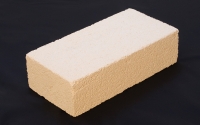
Lightweight, soft insulating Fire Bricks are great for soldering applications. May be carved and pinned. Dimensions: 9" x 4.5" x 2.5".
Soldering Pans with Pumice:
Soldering pans loaded with pumice have a rotating turntable mounted on the bottom, making it easy to turn your work while soldering. Pumice is coarse gravel that reflects heat as well as holds pieces in any position.
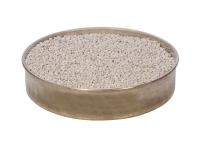
Our 7 inch soldering pans rotate 360 degrees with easy access. The heat reflecting pumice is perfect for supporting your project in any position - flat or embedded. Each pan includes pumice.
Watch as Kate tells us about the Rotating Soldering Pan
Tripod with Mesh Screen:
This tool comes in handy when you want to raise your work to eye level or it is necessary to heat your piece from below. The tripod may be placed in a rotating soldering pan (for torch enameling) or on a stationary metal surface. Additional soldering surfaces may be placed on the screen (such as a solder-ite board or charcoal block) as the screen itself is not heat reflective.
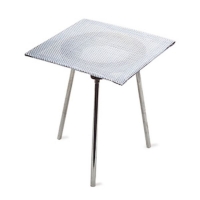
This 6" tripod with mesh screen can be used to stand over an alcohol lamp or Bunsen burner to keep wax pot warm. A necessity for any jewelry workbench.